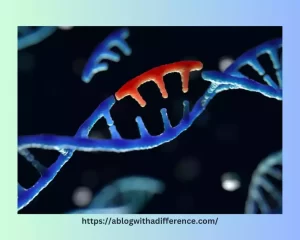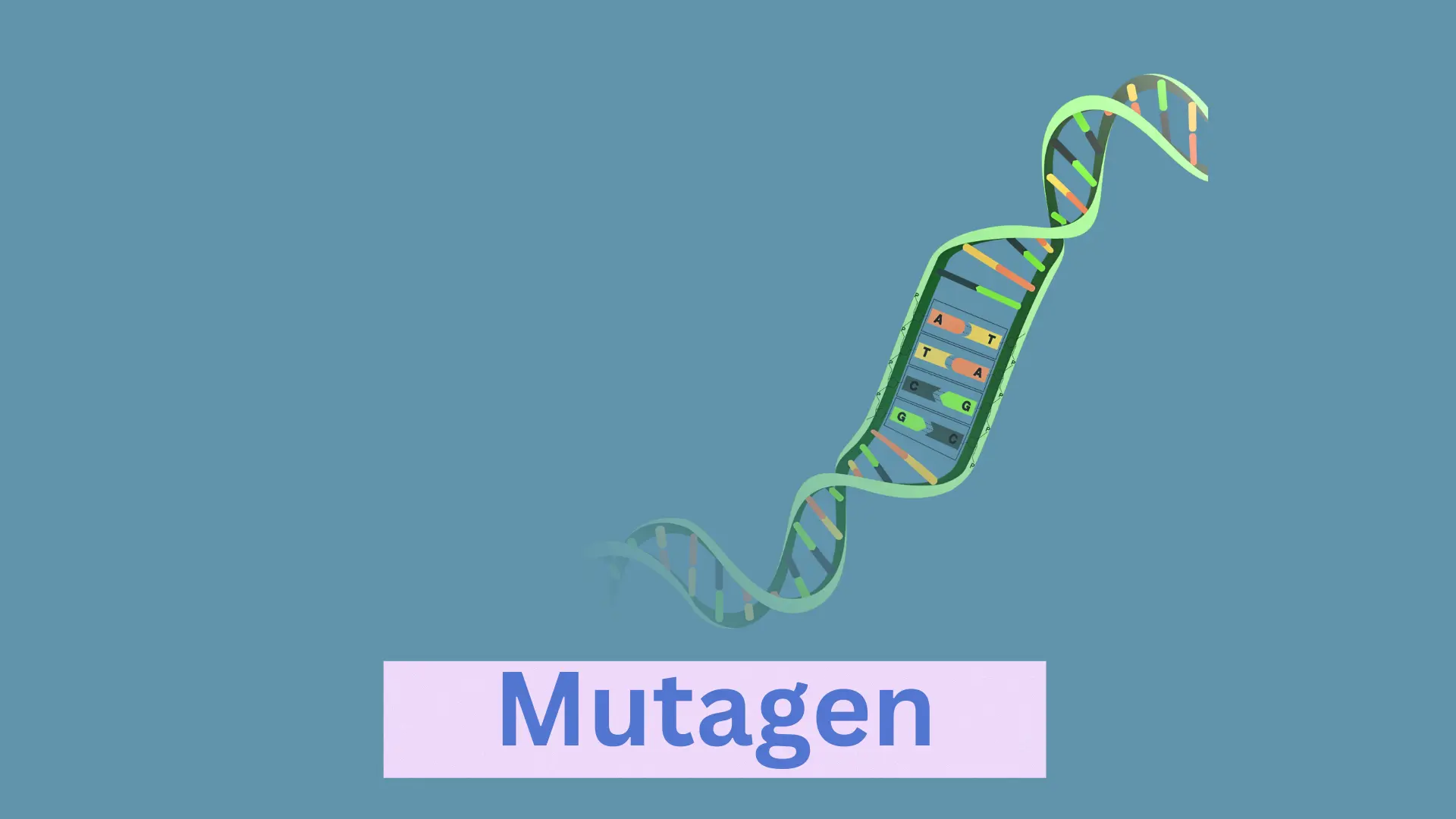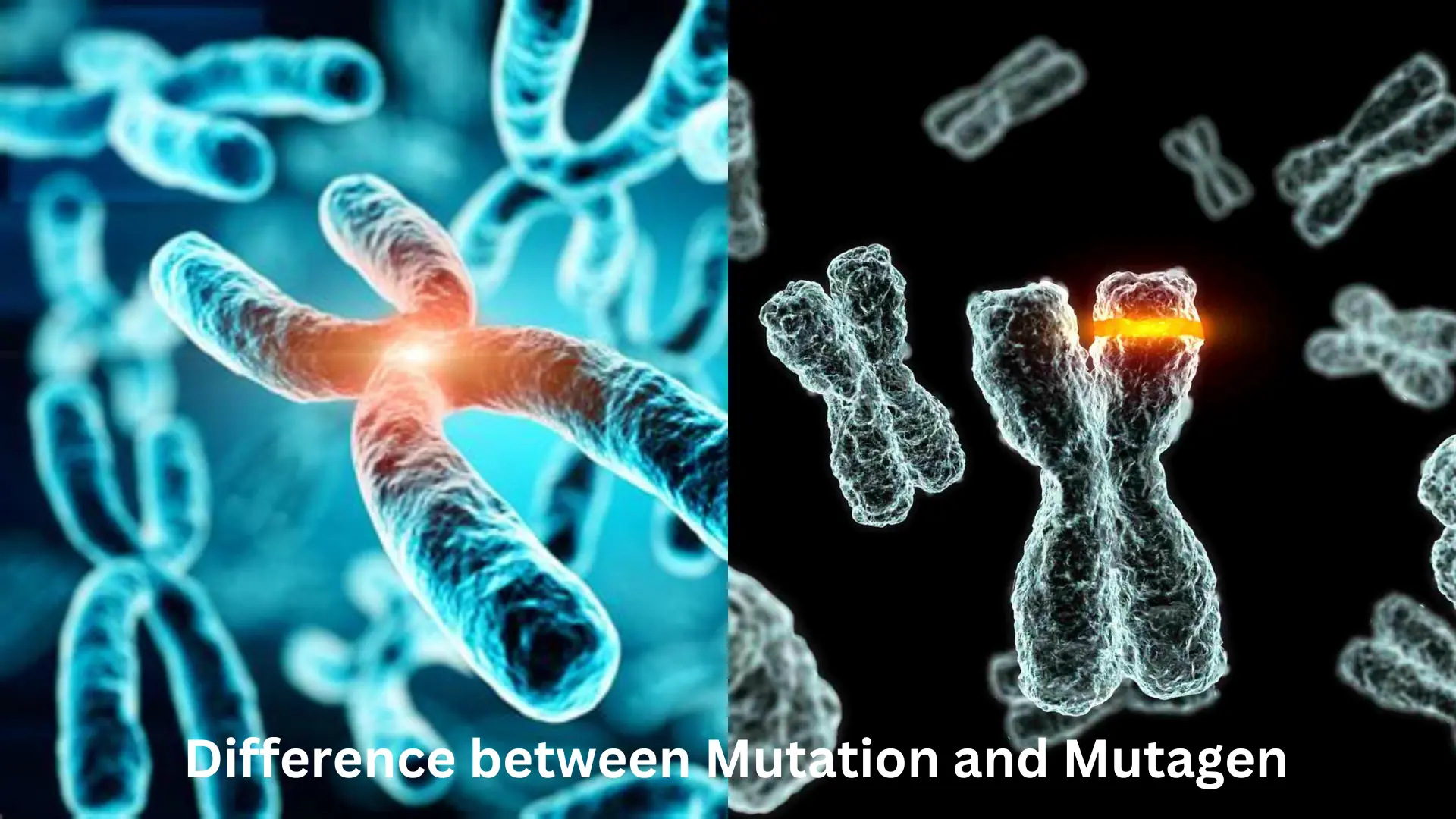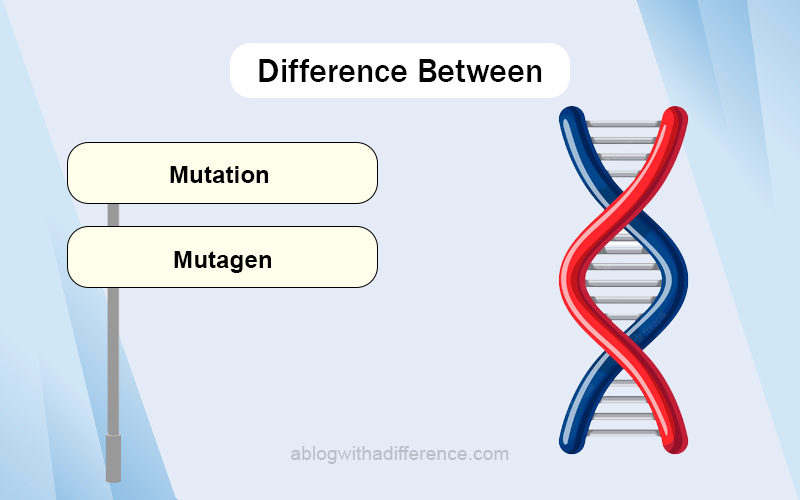Difference Between Mutation and Mutagen
Brief overview & key difference of Mutation and Mutagen
Mutations : Mutations is any change to an organism’s DNA sequence that results from errors during DNA replication or through environmental exposure, such as chemicals or radiation exposure. Mutations has various impacts on an organism ranging from no noticeable change to significant modifications of traits or functions; its introduction provides genetic diversity while in rare instances leading to genetic diseases.
Mutagen: A mutagen is any agent or factor which causes mutations to increase, usually by physical, chemical, or biological means. Examples include radiation such as X-rays and Ultraviolet (UV) rays as well as chemicals or pollutants which interact with DNA to alter its structural makeup. Chemical mutagens include certain pollutants which interact directly with it to cause structural alterations biological mutagens include viruses that integrate themselves into an organism’s genome to cause mutations.
Mutation vs Mutagen: Mutations refer to actual changes that take place within DNA sequence, while mutagen is defined as any agent or factor which increases mutation rates through external agents or factors. mutation is therefore defined as its result while mutagen acts as its cause, some mutations arise spontaneously while some due to mutagen exposure can happen naturally during DNA replication.
Mutagens specifically induce or increase mutation risk by acting upon physical, chemical and biological agents whereas mutations include changes to sequence with potentially different consequences than expected.
Mutation
Mutation Refers to any change that takes place in an organism’s genetic material through mutation, including mutation of individual nucleotides or larger structural Modifications such as inserting or deleting segments of DNA. Mutations may arise either naturally due to errors during DNA replication or can be brought about externally through agents known as mutagens.

There are different kinds of mutations, such as point and frameshift mutations. Point mutations involve changing one nucleotide for another and can either lead to different amino acid coding or no change at all (silent mutation). By contrast, frameshift mutations involve inserting or deleting nucleotides that alter DNA reading frames resulting in nonfunctional or altered proteins as a result of reading frame shifting causing reading frame shift and possibly leading to nonfunctional or changed protein structures.
Mutations play an essential part in evolution by providing genetic diversity. Mutations lead to variations in traits and provide raw materials for natural selection to act upon, as some mutations have detrimental consequences that lead to genetic diseases while others provide advantages that help organisms adapt and survive their environment.
Mutagen

Mutagens are agents or factors which cause or increase mutation rates within an organism’s DNA sequence, including physical, chemical or biological toxins that alter it and cause genetic mutations. Mutagens may alter DNA sequencing leading to significant genetic variations as a result.
Physical mutagens include radiation sources like X-rays and gamma rays as well as ultraviolet (UV) radiation from Mutation and Mutagen natural and artificial sources that directly damage DNA molecules causing breaks or changes to their nucleotide sequence.
Chemical mutagens refers to any substance which interacts with DNA, altering its structural elements and potentially leading to structural mutation. Examples of chemical mutagens found in the environment such as pesticides, industrial pollutants or some components of tobacco smoke could all act as mutagens by altering DNA bases, crosslinking strands of chromosomes or interfering with replication/repair processes.
Biological mutagens also referred to as Biological mutagens, are biological agents which cause mutations.
Viral infections for instance may integrate their genetic material with that of their host organism’s DNA and cause disruption or modification to genes; transposons (also referred to as jumping genes or “jumping gene elements”) are genetic elements capable of moving within genomes to insert themselves in different positions and induce mutations through jumping between DNA regions causing mutations.
Study of mutagens and their effects has become an integral component of genetics, toxicology, and environmental sciences. Acknowledging mutagens helps assess potential risks from certain substances or activities as well as develop ways of mitigating exposure; research on mutagens also sheds light into DNA repair mechanisms as well as cell responses during mutation events, as well as provides new treatments for genetic diseases or cancer.
Difference between Mutation and Mutagen

Mutation and mutagen are related but distinct terms in genetics, with mutation referring to DNA-altering effects while mutagen is the chemical that changes it into non-living elements such as proteins that lead to mutation.
Here is how they differ:
Mutations:
- Definition: Mutations is defined as any change to an organism’s DNA sequence that disrupts it in some way, leading to altered traits in their genetic material.
- Nature: Mutations is any change to the DNA sequence that results from mutation.
- Cause: Mutations may arise naturally as a result of mistakes during DNA replication or other natural processes; or through exposure to mutagens.
- Effects: Mutations has the ability to produce diverse effects in organisms, from no noticeable alteration at all to dramatic shifts in traits or function. Mutations play an integral part of evolution by providing genetic diversity while potentially leading to genetic diseases in some instances.
Mutagen:
- Definition: Mutagens are agents or factors which cause or increase mutations to DNA of an organism.
- Nature: Their source may come from external agents or factors which increase mutation rates.
- Cause: Mutagens can come in various forms such as physical, chemical and biological sources – they serve as agents that cause mutations to take place in cells and lead to changes.
- Effects: Mutagens cause mutations directly or indirectly by altering DNA sequence. They include physical agents like radiation (X-rays or UV light), chemicals or pollutants like certain solvents and solvent-borne pollutants as well as biological threats like viruses or transposons.
Comparison chart:
| Topic | Mutation | Mutagen |
|---|---|---|
| Definition | A change that occurs in the DNA sequence of an organism’s genetic material. | An agent or factor that can induce or increase the frequency of mutations. |
| Nature | Actual changes in the DNA sequence itself. | External agents or factors that cause or increase the likelihood of mutations. |
| Cause | Spontaneous or induced by various factors. | Causes mutations directly or indirectly. |
| Effects | Can have various effects on an organism, ranging from no noticeable impact to significant changes in traits or functions. | Can directly or indirectly alter the DNA sequence, leading to mutations. |
| Examples | Substitution, insertion, deletion of nucleotides. | Radiation, certain chemicals, viruses. |
| Relationship | Mutations can occur spontaneously or due to mutagen exposure. | Mutagens are the causes of mutations. |
| Importance | Crucial for evolution, genetic diseases, and genetic diversity. | Significant for understanding risks, DNA damage, and genetic changes. |
| Research | Studied to understand genetic disorders, evolutionary processes, and DNA repair mechanisms. | Studied to evaluate risks, develop mitigation strategies, and explore environmental impact. |
Similarities between Mutation and Mutagen
There are a few similarities between Mutation and Mutagen:
- Relationship: Mutations and mutagen are related terms when discussing genetic changes, with mutations being actual alterations of DNA sequence, while mutagens act as agents or factors which increase its frequency by inducing mutations or increasing mutation frequency.
- Impact on DNA: Both mutation and mutagens can alter DNA sequence, with mutations either naturally or due to exposure of mutagens causing mutations or directly or indirectly producing changes within it.
- Genetic Consequences: Mutations and mutagens both can have serious genetic ramifications. Mutations can alter traits or cause genetic diseases; while mutagens induce mutations which alter organism phenotypes or characteristics.
- Study and Research: Mutation and mutagen research is integral in many scientific fields such as genetics, evolutionary biology, toxicology and environmental sciences. Gaining an understanding of Mutation and Mutagen concepts enables researchers to better comprehend genetic changes caused by mutation and mutagen exposure as well as develop strategies to mitigate any associated genetic diseases or manage risks related to mutagen exposure.
Conclusion
Mutations is any change to an organism’s genetic material that occurs due to random chance or external influences; whether spontaneously or intentionally. Mutations is essential in evolution by providing genetic diversity; and may lead to serious illnesses through mutational DNA changes themselves. Mutations occurs whenever there are differences between individuals; mutation is what’s behind that change itself! Mutagens, on the other hand, are external agents or factors which induce or increase mutation rates through physical, chemical or biological means. Mutagens include radiation exposure, chemicals as well as biological elements like viruses or transposons which contribute directly or indirectly to DNA mutation.
Distinguishing between mutation and mutagen is essential for understanding genetic changes, the impact of environmental factors on DNA, and devising mitigation plans to limit risks from mutagen exposure. Researchers who research mutations and mutagens can gain invaluable insight into evolutionary processes, genetic diseases, DNA repair mechanisms, as well as potential treatments for genetic disorders and cancer.


